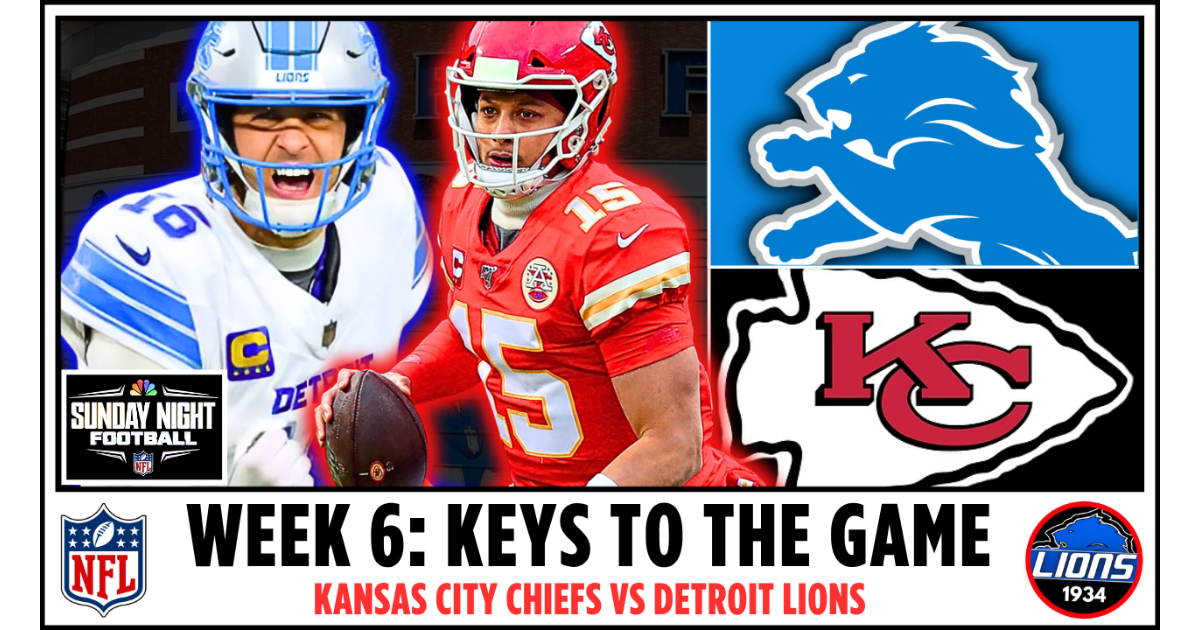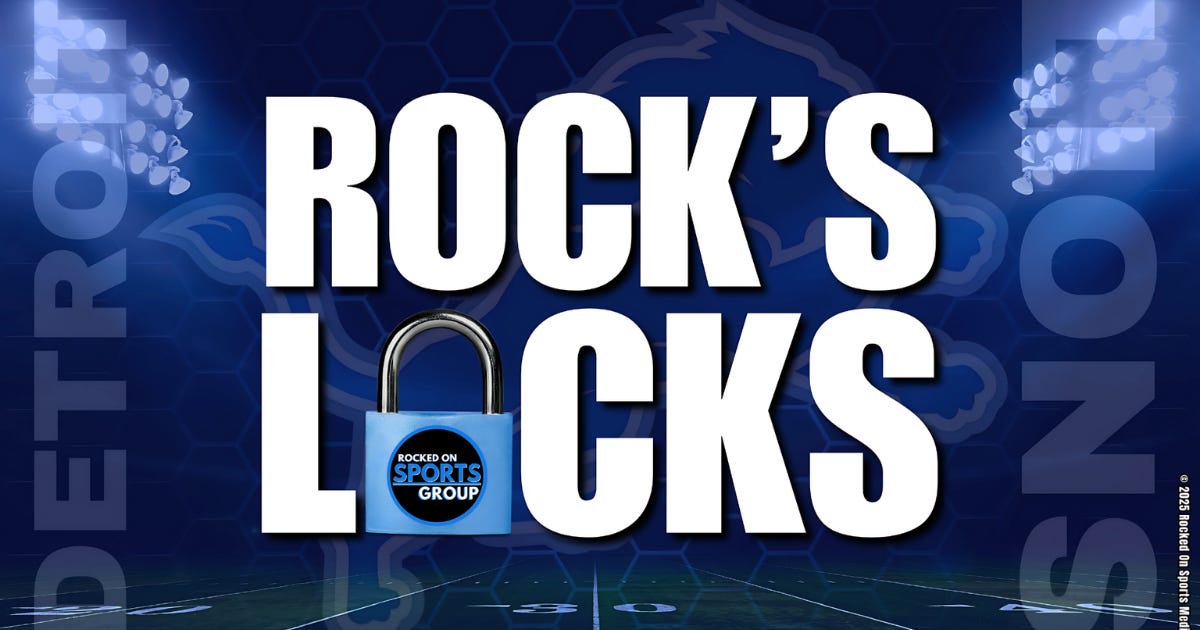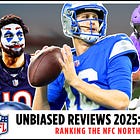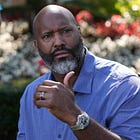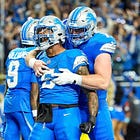Film & Coverages Review: Detroit Lions VS Chiefs Offense - NFL Week 6
Against the Kansas City offense, discipline and tackling may matter more than the splash play.
Who the Chiefs Are on Paper
On paper, the Chiefs are a top‑10 offense paired with a middle‑tier defense that excels against the pass but can be gashed on the ground. They remain dangerous because of Mahomes’ off‑script ability and the speed of Xavier Worthy and Hollywood Brown.
Kansas City’s defense can tighten up when its front four wins early downs, but sustained rushing attacks and efficient red zone execution expose cracks. For all their discipline in coverage, this is a defense that can be worn down physically and forced into long drives, leaving the door open for opponents who stay balanced and finish possessions. The numbers show a team that can be beaten if you control the run game, finish drives in the red zone, and force them into long third downs.
Chiefs Offense Vs Lions Defense
Offensively, the Kansas City Chiefs still carry firepower, but on paper they look far more balanced—and vulnerable—than in years past. Offensively, the Chiefs rank 8th in total offense, averaging 361 yards per game. They sit 9th in passing at 241 YPG and 12th in rushing at 120 YPG, producing 25 points per game, good for 12th in scoring. Patrick Mahomes has thrown for 1,257 yards with 8 touchdowns and 2 interceptions, but his efficiency has dipped—just a 63.4% completion rate and a 93.5 passer rating compared to his career average. Explosives are still there (50 completions of 10+ yards, 15 of 20+), but the consistency has wavered.
The Chiefs Money Downs
The red zone battle is telling: Kansas City’s offense ranks just 16th, scoring touchdowns on 60% of trips, while their defense sits 16th as well, allowing 2.4 red zone TDs per game. On third downs, Mahomes and company convert 38% (12th), while the defense allows 42% (11th). That statistical symmetry underscores a team that is good, not great, in the money downs.
Lions Defensive Strategy: Coverage & Pressure Concepts
Mahomes = Lamar Concept:
The Lions should be playing this one exactly like they did against the Ravens with a twist. The man defense will be limited and used inside of the zone man concept.
Zone-Match Quarters:
Corners and safeties pattern-match routes, allowing defenders to keep vision on the QB while still playing tight coverage.
Disguised Rotations:
Safeties rotate late into Cover 3 or Cover 6 looks, designed to bait quarterbacks into mistakes.
Blitz Packages:
The Lions’ most effective pressure looks come from:
Delayed B-gap blitzes from Jack Campbell, using Hutchinson’s inside slant to occupy guards and open interior lanes.
Green dog blitzes from Alex Anzalone, triggered when his coverage assignment stays in to block, allowing him to attack the pocket.
Simulated pressures, where a linebacker shows blitz pre-snap but drops into coverage while a defensive end (like Al-Quadin Muhammad) loops inside to rush.
Turnover Emphasis:
Through five weeks, Detroit’s defense has improved at creating takeaways with disguised coverages and opportunistic play. But with multiple starters in the secondary out, those chances may shrink against Patrick Mahomes. Despite an uneven start, Kansas City protects the ball—Mahomes has only two interceptions—and punishes overaggressive defenses with explosives.
For Kelvin Sheppard to have a successful gameplan, ensuring his guys understand the risk‑reward in chasing turnovers could just as easily give up a 40‑yard strike. Against the Kansas City offense, discipline and tackling may matter more than the splash play.
Can The Lions Win With A Depleted Secondary?
The Jaguars proved you can frustrate Mahomes by rushing four, bracketing Kelce, and disguising coverage. For Detroit, the formula is the same but tailored: let Hutchinson/AQM/Williams/Reader carry the rush, keep Joseph and Branch as the disguise engines, and use Jack/Anzalone as the stabilizers. The Lions don’t have Jacksonville’s corner depth, so discipline and disguise—not blitz volume—must be the backbone.
Front Four Pressure, Contain Lanes – “Collapse Without Commit”
Call: Four‑man rush with Aidan Hutchinson, D.J. Reader, Tyleik Williams and Al‑Quadin Muhammad.
Execution: Replicate Jacksonville’s success by generating pressure without blitzing, keeping linebackers in coverage. Hutchinson sets the edge, Reader takes on doubles, Tyleik Williams collapses the middle pushing Mahomes off his spot, and Jack/Anzalone stay clean to spy or drop into coverage.
Result: Mahomes is forced into tighter windows and loses his escape lanes, reducing his off‑script magic.
Zone-Match Shells – “Eyes on the QB”
Call: Quarters and Cover 6 zone‑match with Joseph and Branch deep.
Execution: Pattern‑match routes while keeping vision on Mahomes, just as Jacksonville did. Corners (Robertson / Ya Sin) funnel verticals inside, Branch or Maulet handles slot leverage, safeties cap speed. I would rather see Branch in the nickle/slot with Joseph at safety. Keep these two separated to spread the field with elite playmakers. Strickland can hold it down with Joseph.
Result: Explosives to Worthy and Brown are capped, forcing Kansas City into long, methodical drives.
Kelce Bracket – “Box the Ace”
Call: LB under + safety over Kelce on all third downs and red zone snaps.
Execution: Jack or Anzalone plays underneath leverage, with Joseph or Branch over the top, emphasis on the jam at the line on Kelce when aligned in the slot.
Result: Mahomes’ most trusted outlet is erased, disrupting rhythm.
Overview
Kansas City Chiefs:
The Chiefs’ offense is still built around Patrick Mahomes slinging it. They rank top‑10 in success rate (how often a play “stays on schedule”) and EPA per play (a stat that measures how much each snap adds to expected points). In plain terms, they move the ball efficiently and create scoring chances. Kansas City throws often in “neutral game scripts” (when the score is close and they don’t have to pass), and they use play‑action about 10th‑most in the league — that’s when Mahomes fakes a handoff to freeze defenders before firing downfield.
Detroit Lions:
The Lions lean the other way — they’re a run‑first team that pounds the ball, then sets up the league’s highest play‑action rate to create chunk plays through the air. They also lead the NFL in shifts and motion percentage, meaning they move receivers and tight ends around before the snap to confuse defenses and create mismatches. Like the Chiefs, Detroit ranks top‑8 in both success rate and EPA per play, so they’re efficient in their own style.
The Defenses:
The Chiefs’ defense has been shaky, ranking 20th or worse in both success rate allowed and EPA allowed per play — in other words, opponents are moving the ball on them. The Lions’ defense is much stronger overall (5th in both categories), but they’ve been vulnerable through the air, giving up the second‑most explosive pass plays and the sixth‑most receiving yards to wideouts (800). Both defenses have also been hit for more explosive runs than average.
Trenches:
Up front, both teams can rush the passer — each ranks top‑12 in pressure rate, with Kansas City sitting at #1 in the NFL. Expect Detroit to counter that strength by sticking to their run‑heavy identity, using the ground game and play‑action to slow down the Chiefs’ pass rush.
Join The Detroit Football Journal Daily Podcasts Below
STAY IN THE GAME WITH DETROIT FOOTBALL JOURNAL
NFL Week 6: Detroit Lions Keys To The Game Vs. Kansas City Chiefs
The Week 6 Sunday Night Football matchup between the Detroit Lions (4–1) and the Kansas City Chiefs (2–3) brings together two franchises with championship ambitions and very different challenges. The matchup carries Week 6’s highest over/under at 51.5 points, which means Vegas expects a high‑scoring, fantasy‑friendly game. Same call I made on the
ALL NEW Rock's Locks | NFL Season Long Picks & Predictions - All Games All Weeks
ROCK’S LOCKS OVERALL W/L | 52-26-1





